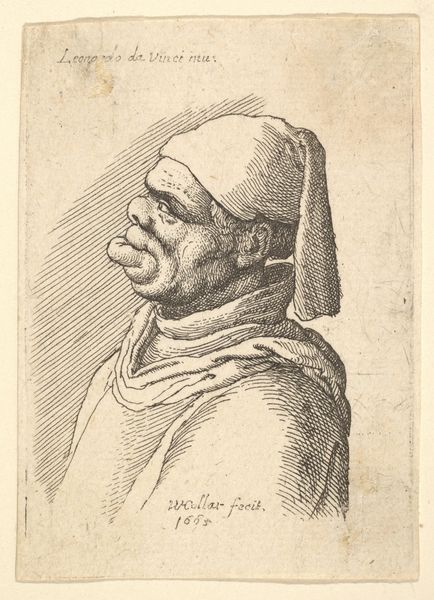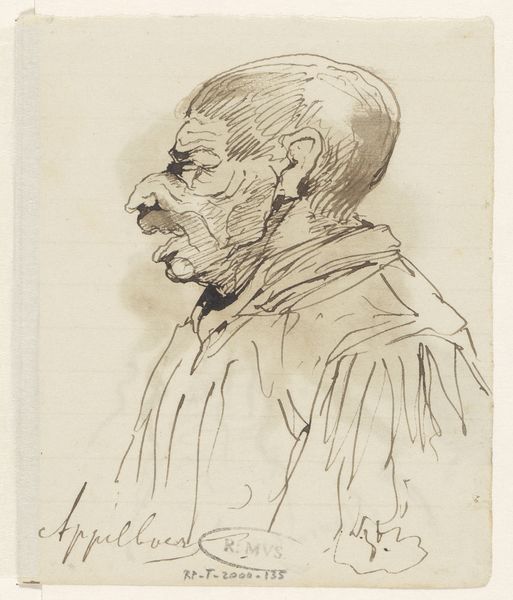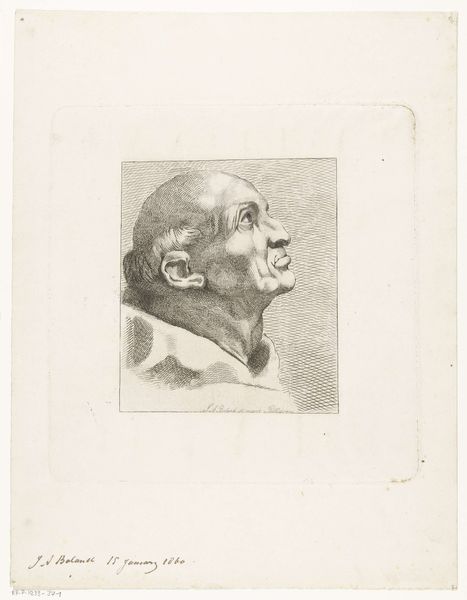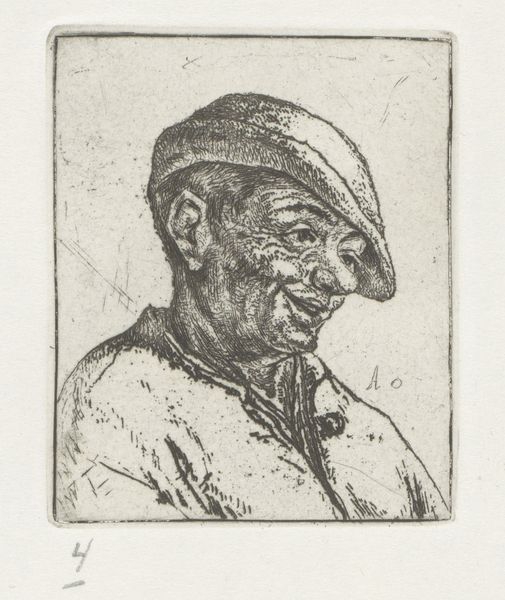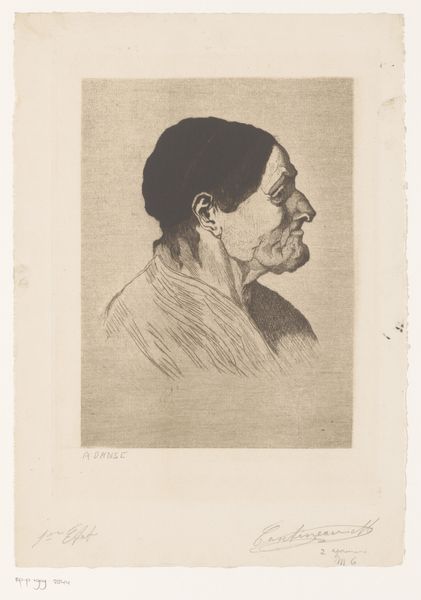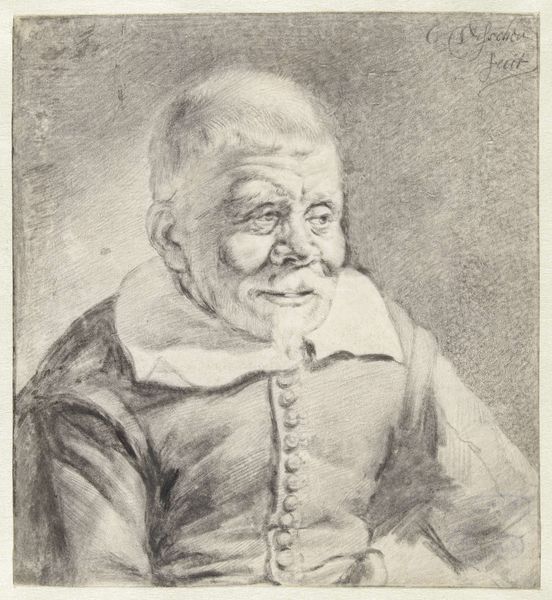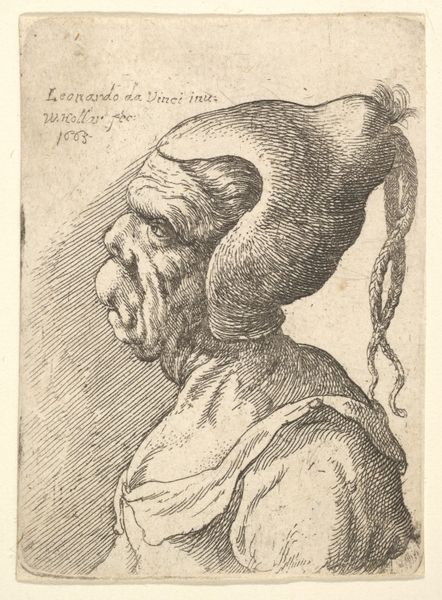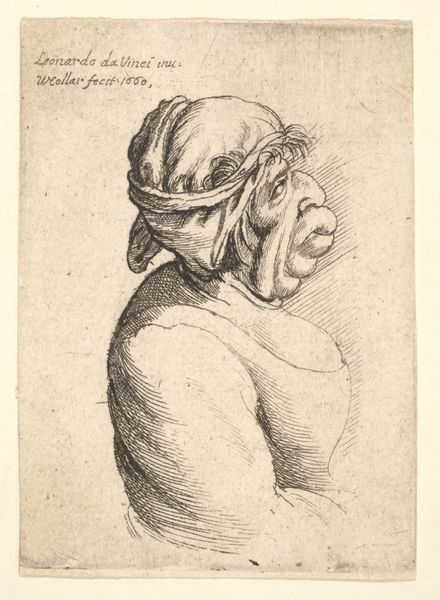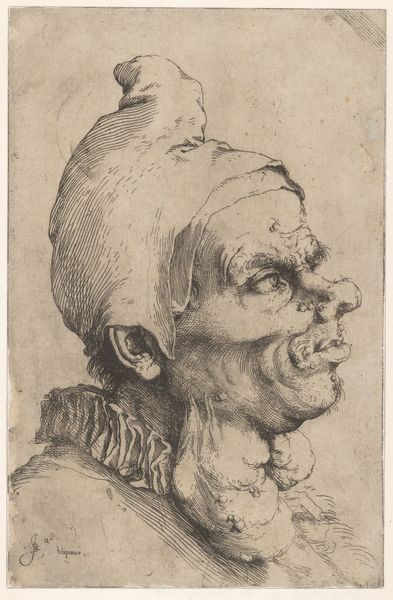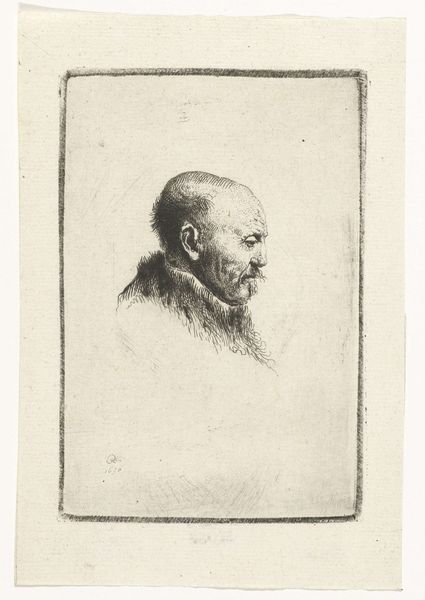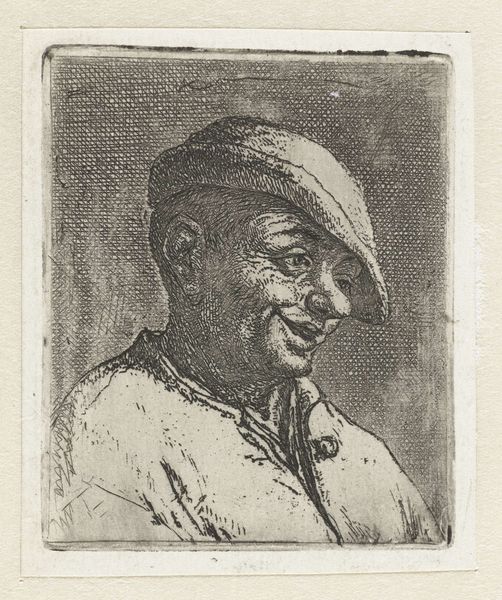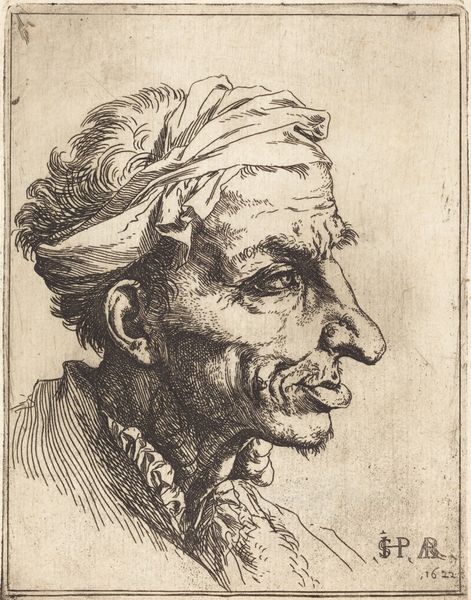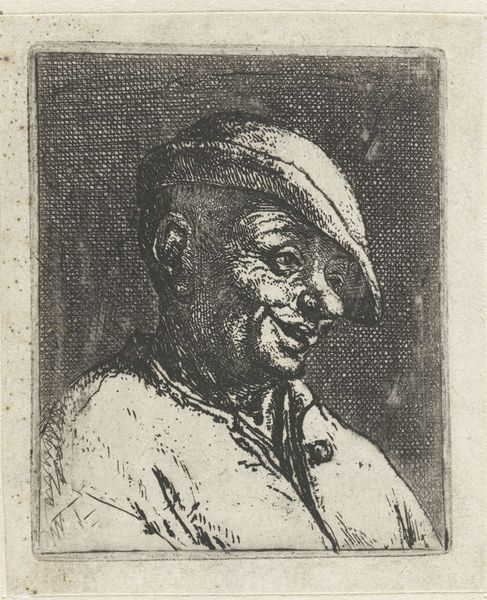
Bust of a man with hooked nose, prominent upper lip, open mouth and thick, short curly hair resembling wig in profile to left 1665
0:00
0:00
drawing, print, etching, engraving
#
portrait
#
drawing
#
baroque
# print
#
etching
#
men
#
portrait drawing
#
genre-painting
#
engraving
Dimensions: Plate: 2 11/16 × 1 15/16 in. (6.9 × 5 cm)
Copyright: Public Domain
Curator: This etching by Wenceslaus Hollar, dating from 1665, now resides here at The Met. The work, entitled "Bust of a man with hooked nose, prominent upper lip, open mouth and thick, short curly hair resembling wig in profile to left", presents us with a rather intriguing character. Editor: Intriguing is one word. The distorted features, the grimace… it’s visually arresting, almost grotesque, relying heavily on caricature, but also makes me feel uncomfortable. There's an intense, unflinching directness in the etching. Curator: Well, we need to remember the time. The mid-17th century witnessed an increase in depictions of the marginalized within European society and in representing "types," and these representations, while falling under the umbrella of genre paintings, often played into pre-existing stereotypes, some reflecting power dynamics of race and class. Consider how Hollar’s patron, the Duke of Norfolk, saw such representations in their social context. Editor: So the focus is less on individual portraiture and more on representing societal "types?" I still find myself fixated on the craftsmanship. The dense crosshatching creates a surprising amount of depth and volume. See how Hollar uses contrasting tones to define the man's facial structure and wig. Curator: Exactly. Hollar's skill is undeniable, yet we can't ignore how it serves potentially problematic narratives of difference. The exaggerated features reinforce stereotypical notions of beauty or normalcy. It’s worth researching other contemporaneous sources and analyzing what "normal" was meant to resemble during the time that Hollar made this portrait. Editor: I see your point. The sharp lines and exaggerated features contribute to a specific construction. He doesn’t soften his interpretation of what he thinks he is viewing. Even the plain background contributes; the stark simplicity amplifies the sitter's intense features. Curator: Ultimately, I think this etching challenges us. Hollar’s artistic skill compels our gaze, even as we reflect on the broader sociopolitical dimensions that have shaped both the work itself and how we receive it today. Editor: Agreed. The intense contrasts—formal skill and questionable subject matter—offer insight into Hollar's technical skill. Analyzing this etching in order to reflect more deeply upon societal issues seems necessary.
Comments
No comments
Be the first to comment and join the conversation on the ultimate creative platform.
